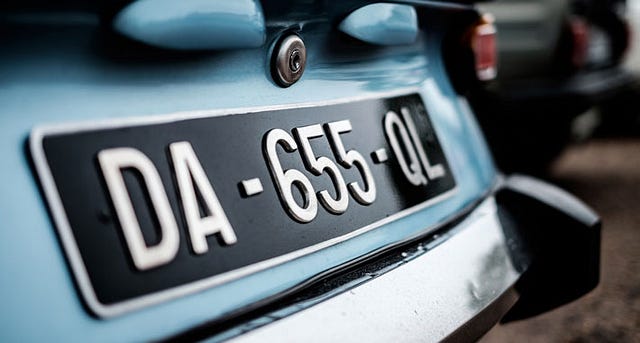DVLA Guidelines About 3D and 4D Plates in UK

Whenever it comes to personalised licence plates, the UK is the world leader. The craze for 3D and 4D plates has been widely popular in recent years, and Brits adore customized licence plates. They appear fantastic, distinguish your automobile, and provide you with artistic freedom. They have all helped to increase their reputation. Nevertheless, there has been a certain misunderstanding over the legal status of 3D and 4D number plates, with several individuals wrongly thinking that they are prohibited from being used on UK roads. If you wish to know more about 3D number plates or wish to buy one then browse 3D number plates UK legal.
What is the DVLA’s position on 3D and 4D licence plates?
What regulations apply to UK licence plates?
In September 2021, a new registration plate law took effect in the UK. The new law outlines some crucial guidelines that must be followed. Which are:
· The substance used to create plates should reflect light.
· The front plate ought to have white text with black lettering.
· On the rear plate, there should be black text against a yellow backdrop.
· Plates shouldn’t have a patterned background.
· A British Standard number must be written on the plates. This is “BS AU 145e” for plates installed after the first of September 2021.
· The numbers and letters on the licence plate cannot be detachable or glossy.
· The writing should be a uniform, consistent shade of black if the licence plates were installed after 1 September 2021.

What Factors Led To The Change?
The most recent production specification for plates, which was implemented in 2021, intends to guarantee that they continue to function properly even after being exposed to the elements and various traffic conditions for a prolonged time. They are made to make sure that vehicle registrations are clear.
Are 3D Licence Plates Permitted?
3D number plates are still permitted on UK roads, notwithstanding some unsubstantiated concerns that modifications to DVLA number plate standards would ultimately result in their outlawing. As a result, 2D plates which attempted to mimic 3D by using an unusual font or appearance are now essentially forbidden. Authentic 3D and 4D licence plates with raised lettering, nevertheless, are still permitted. When searching for a 3D or 4D number plate, be sure to get it from a dependable vendor and confirm that the text is raised. Additionally, the DVLA guidelines say that symbols must be detachable or reflective. Your licence plates should also be a single shade of black if they were installed after September 1, 2022.
Are 4D Licence Plates Permitted?
4D plates are lawful as long as they adhere to all other BS AU 145e legal specifications, are made of reflective substance, have non-reflective solid-black non-reflective writing, and have no background design. The supplier’s name ought to be on the plates as well.
What Modifications Have Been Made To The Law?
The British Standard BS AU 145e should be followed when installing new number plates, whether they are replacing existing ones or are being installed on new cars. This necessitates the use of stronger materials and more rigorous durability testing for the plates, such as a new abrasion test to guarantee they could survive harm from road debris like salt and grit. To help ANPR cameras pick up the license number more easily, the new laws also forbid the usage of two-tone finishes to provide 3D effects.

What Is The Penalty For Using Fake Licence Plates?
Travelling with unauthorised registration plates is still punishable by law. A punishment of up to £1,000 is imposed for failing to exhibit a registration number or for doing so with an improper plate.
Final Words
3D and 4D are currently very popular among the youth; they love them because it symbolizes their freedom to do what they want in their lives.



Comments
Post a Comment